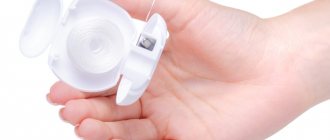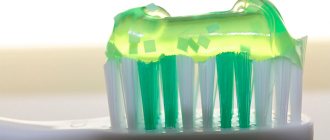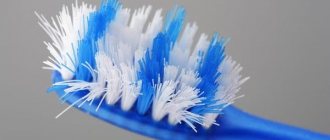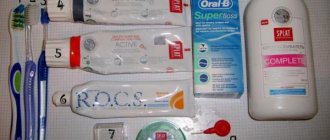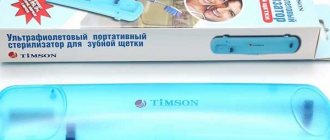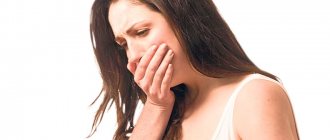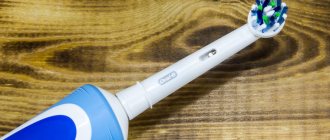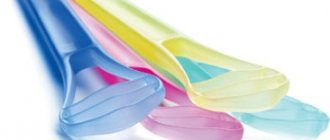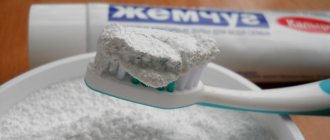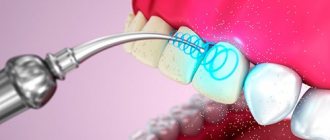The standard method is what we are familiar with
Most often we use the standard method invented by N.G.
Pakhomov – professor of dentistry. Its steps are simple but useful. Cleaning begins from the upper jaw in the following order - from the right molars to the front ones, then finishes on the left molars. After this, they proceed to the lower jaw. The left major ones are cleaned first, then the anterior ones, and lastly the right molars. The front and back surfaces are treated with sweeping movements from bottom to top, with the head positioned at an angle of 45°. The number of movements is usually 10. Dirt on the chewing side is removed by moving the head back and forth.
To clean the front teeth, the brush is placed vertically, after which sweeping movements are also made. Lastly, the tongue is treated, and finally the mouth is rinsed with water.
In general, the Pakhomov method helps to effectively clean the oral cavity, but for the interdental spaces additional means are needed - irrigators, threads.
Standard cleaning method
Experts recommend that all people who have healthy teeth and gums, and who do not suffer from increased tooth sensitivity, brush their teeth twice a day for three minutes. Now we list the rules that should be followed during the standard method of brushing your teeth:
- The first step is to mentally divide the dentition into three segments: front teeth, molars, premolars;
- It should also be noted that the toothbrush should be held at an angle of 45 degrees relative to the surface of the teeth. The upper and lower jaws should be open;
- The outer surface of the upper teeth should be cleaned from left to right, making 10 sweeping movements with the brush on each segment. Sweeping movements with a toothbrush are carried out from top to bottom, that is, from the gum to the end of the tooth;
- The upper teeth should be cleaned in the same way, but from the back (palatal) surface;
- The lower row of teeth should be cleaned in exactly the same sequence;
- Next, you can begin cleaning the chewing surface of your teeth. Brushing is done by moving the toothbrush back and forth. Approximately 10-15 of these movements should be made on each side of each jaw;
The standard teeth cleaning procedure should always end with a gum massage. To do this, you need to close both jaws together and use a toothbrush to make circular movements along the surface of the teeth, while grabbing the gums.
Other ways to brush your teeth
The best way to brush your teeth is the one that's right for you.
There are different techniques for removing contaminants. Some of them are recommended for people with various pathologies, others have already lost their relevance and are needed only for information.
Leonardo
The technique was invented in the mid-20th century. According to it, the brush is placed perpendicular to the tooth surface and several vertical movements are made up and down. After processing the back and front sides, the jaws should be opened and the chewing teeth should be cleaned. They do this with standard horizontal actions.
The Leonardo method is suitable for people with gum disease, since they are not affected during the treatment. The method is suitable for children, but you need to ensure that the procedure is performed correctly.
Bassa
This technique is suitable for adults; it is difficult for children to ensure the correct position of the brush during the process. If the gums are positioned incorrectly, they become injured, bleed, and become inflamed.
It's better to use a small brush. It is placed at an angle of 45° to the transverse dental axis and produces vibrating movements. The bristles extend into the interdental spaces (partially) - this is called the outer groove position.
The head is moved gradually from one place to another, cleaning them from different sides. After this, alternately making forward and backward movements, treat the chewing surfaces.
The Bass method helps to fully clean the spaces between the teeth and is suitable for people with a healthy oral cavity and periodontitis, but in case of gum inflammation, it is better to refrain from using it.
Charter
The technique appeared at the beginning of the 20th century. The essence is to position the brush at an angle of 45° relative to the dental axis, the bristles partially extend into the interdental spaces (external groove position).
The movements are circular, allowing maximum penetration into hard-to-reach places. The repetition rate in one place is 3-4. After this, the brush is moved and another group of dental units is cleaned. Chewing surfaces are processed using back and forth movements.
The technique is gentle and suitable for gum massage of patients undergoing treatment for periodontal disease. The Charter technique involves preliminary removal of plaque with ultrasound, since it is not able to completely clean the oral cavity.
Rate
The Reite method was invented in the 70s of the 20th century. The brush is located parallel to the tooth surface at the gingival edge; during the rolling movement of the head downwards, it is placed at a right angle. This is how they clean the elements from the back and front, after which they proceed to the chewing side. It is processed with horizontal movements. The technique is quite simple, suitable for children, but is considered outdated.
Fonesa
The technique was invented by the American dentist Alfred Fones, who is considered one of the founders of hygienic dentistry.
For this method of hygienic cleaning, the teeth should be closed perpendicular to each other. The Fones technique is suitable for people without periodontal and gum pathologies. The brush is placed perpendicular to the tooth surface and cleaned alternately with circular movements (3-4 repetitions).
After this, the jaws open and proceed to the chewing surfaces. They are cleaned using standard back and forth movements.
Stillman
The Stillman technique was invented in the 30s of the last century. The essence of the method is to tightly position the head at the edge of the gum, until the latter acquires an anemic appearance. The brush is used to perform gentle rotational actions. They are done until the normal color of the soft tissues is restored. This applies to the front side.
When cleaning the rear brush, place it perpendicularly and carry out sweeping actions. The chewing sides are treated using back and forth movements.
Smith-Bell
The technique was invented in the mid-20th century. To remove dirt, the brush should be positioned perpendicular to the chewing side. The movements of the head seem to follow the path of food while chewing it. The brush is pressed and rotated, while at the same time it is moved over the entire surface of the tooth. This way the entire oral cavity is cleaned.
Smith-Bell method (“physiological”)
The brush follows the path taken by food along the surface of the tooth when biting and chewing. The brush is placed on the chewing surface so that the bristles form a right angle with it. Lightly pressing and rotating the brush head, move along the chewing surface, then (in the vertical direction) along the vestibular surface to the gingival margin. Advantages of the method: physiological. Disadvantages of the method: technical complexity, risk of gum injury.
Reite method
Vestibular and oral surfaces are cleaned with vertical sweeping movements, and chewing surfaces with horizontal movements. Along the vestibular and oral surfaces, the bristles pass food in the opposite direction: from the gingival margin to the chewing surface. First, the bristles are placed parallel to the vertical axis of the tooth, with the tips of the bristles adjacent to the gum.
When brushing, the tips of the bristles move towards the chewing surface, and at the end of the path the bristles form a right angle with the axis of the tooth. Advantages of the method: low probability of gum injury, penetration of bristles into interdental spaces.
Leonard method
Vestibular and oral surfaces are cleaned with vertical movements, and chewing surfaces with horizontal movements. Unlike the Reite method, the vestibular surfaces are cleaned with the teeth closed, and the bristles are always perpendicular to the surface of the teeth. Brush movements:
- down: from the necks of the upper teeth to their chewing surface (with force), from the chewing surface of the lower teeth - to their necks (without force);
- upward: from the necks of the lower teeth to their chewing surface (with force), from the chewing surface of the upper teeth - to their necks (without force).
Advantages of the method: economy of movements, low risk of gum injury. Disadvantages of the method: high technical complexity.
Fones method
The method is performed only in circular movements. To clean the vestibular surfaces, the teeth are closed, the brush is placed in Cp, the bristles are perpendicular to the surface being cleaned. The brush head makes circles while simultaneously capturing the teeth of both jaws and the adjacent gingival margin. The same movements are performed to clean the oral surfaces (separately for the upper and lower jaws).
Chewing surfaces are also cleaned using circular movements. Advantages of the method: the uniformity of movements facilitates the assimilation of the method, massage of the gums is carried out. Disadvantages of the method: insufficient cleaning of contact surfaces, mechanical trauma to the diseased periodontium.
Methods of Bass, Stillman, Charter
The methods are united by the fact that they involve cleansing the vestibular and oral surfaces and massaging the gums with vibrating movements, and cleaning the chewing surfaces with horizontal movements. The Bass method involves installing a brush field in the cervical area and on the adjacent gingival margin so that the bristles, with their ends facing the gum, form an angle of 45° with the tooth surface.
The tips of the bristles are fixedly fixed on the surface of the tooth and gums, the brush head makes small movements back and forth; vibration movements are replaced by several short sweeping movements. The brush is then moved to the adjacent segment. The method allows you to clean the gingival sulcus (only a soft brush is used) and is good for cleaning exposed roots.
Professional cleaning
Professional hygiene is performed by a doctor in a clinical setting. Advantages of the procedure:
- Effective removal of contaminants - plaque and stone.
- Using ultrasound, stone is removed from the sub- and supragingival spaces.
- Cleaning gum pockets.
- Polishing the enamel with a special paste.
- The enamel is also coated with varnish, a fluoridating compound that nourishes the dental tissue. This is required to prevent oral pathologies.
- After the procedure, the enamel becomes lighter.
In addition to ultrasound, Air-flow devices are used for professional cleaning, the action of which is based on the action of soda, water and air. A high-pressure jet from the device cleans teeth, but this method is suitable for soft stains.
Professional cleaning is suitable for persons over 16 years of age. Contraindications include arrhythmias, tuberculosis, hepatitis, HIV, ARVI.
Who needs ultrasonic teeth cleaning?
Even if a person is careful about oral hygiene, it is not enough to maintain oral health. Dentists advise everyone who is attentive to their health to clean their teeth with ultrasound at least once a year. This will help avoid many diseases. In addition to preventive indications, the procedure is indicated for therapeutic purposes:
- for allergic stomatitis;
- bleeding gums;
- catarrhal gingivitis;
- in the presence of dental plaque;
- at the initial stage of gum disease;
- for periodontitis;
- at the first signs of caries;
- with periodontal disease;
- in the presence of dental plaque;
- with hypertrophic gingivitis;
- with a specific odor from the mouth.
It is also advisable to carry out this procedure before installing the filling, as it is better held on a clean surface.
Best techniques for children
For patients under 7 years of age, the KAI method is suitable, the essence of which is to clean the chewing side of the teeth with horizontal movements, the rest - in a circular motion. Removal of contaminants begins from the upper jaw from right to left, then moves in the opposite direction.
For older children, the Martaller technique is suitable. During its implementation, the chewing sides are treated with sweeping movements. Next, the jaws are closed and the plaque is removed in a zigzag manner. The inside is cleaned in the same way, only the head is at an angle of 45 degrees.
There are enough cleaning methods, but to select the optimal one, you should contact your dentist, who will help you choose a technique and show you how to perform it correctly. First of all, this is relevant for patients with oral pathologies; for people with healthy teeth, the standard Pakhomov technique is suitable.
